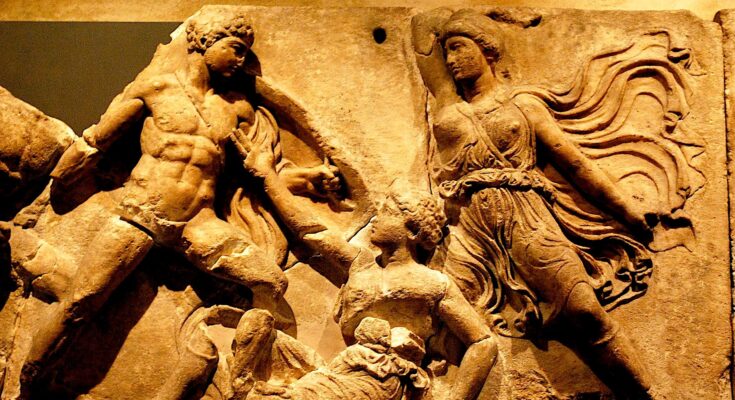Excavations of bronze age burial sites have uncovered battle-scarred female archers, leading some archaeologists to posit that Amazons, the famed female warriors of Greek legend who are largely believed to be mythical, may have existed.
In Greek mythology, the Amazons were warrior women living northeast of ancient Greece during the late Bronze Age, between approximately 1900 and 1200 BC. The source of the Amazonian myths is Classical Greek literature in which they were first mentioned by Homer.
As one of his 12 labors, Hercules has to get hold of the magic girdle of the Amazonian queen Hippolyte, and Achilles killed another Amazonian queen, Penthesilea, only to fall madly in love with her as her gorgeous face emerged from the helmet.

Despite being shrouded by mystery and myth, archaeologists are beginning to find more and more evidence for the existence of these fierce female warriors, the latest piece coming from excavations of graves within a Bronze Age necropolis in Nakhchivan in Azerbaijan. This revealed that women had been buried with weapons such as razor-sharp arrowheads, a bronze dagger, and a mace, as well as jewelry.
Following the discovery, archaeologists have concluded there may have been Amazon women who lived 4,000 years ago, and these ferocious women were known for their male-free society and aptitude on the battlefield, especially with a bow and arrow.
“It shows that there’s truth behind the myths and legends of ancient Greece,” historian Bettany Hughes told The Observer.

Were the Amazons real?
Hughes went on to say that this recent evidence was all the more significant when linked with earlier discoveries. In 2019, the remains of four female warriors buried with arrowheads and spears were uncovered in Russia, and in 2017, Armenian archaeologists found the remains of a woman who seemed to have died from battle wounds, as an arrowhead was buried in her leg. In the early 1990s, the remains of a woman buried with a dagger were discovered near the Kazakhstan border.
“A [civilization] isn’t made up of a single grave,” Hughes told The Observer. “If we’re talking about a culture that crosses the Caucasus and the Steppe, which is what all the ancients said, obviously you need other remains.”
Some of the skeletons show women had used bows and arrows extensively. Hughes observed that “their fingers are warped because they’re using arrows so much. Changes on the finger joints wouldn’t just happen from hunting. That is some sustained, big practice. What’s very exciting is that a lot of the bone evidence is also showing clear evidence of sustained time in the saddle. Women’s pelvises are basically opened up because they’re riding horses. [Their] bones are just shaped by their lifestyle.”
Moreover, she noted that the jewelry includes carnelian necklaces, saying, “Carnelian is a semi-precious stone. You see it often when people are high priestesses or goddesses. So it’s a mark of women with status—as are mace heads.”
The fruits of the excavation will be revealed in a new Channel 4 series in April, called Bettany Hughes’ Treasures of the World, wherein one of the episodes, “Silk Roads and the Caucasus,” centers on an area of the world that saw the coming and going of cultures and civilizations for hundreds of years and where trade routes linked the continents of Asia and Europe.
In the documentary, Hughes says of the Amazon finds, “Slowly you’re getting these brilliant bits of evidence that are coming out of the earth. That’s often the way, with the really best stories.”
The archaeologist takes a trip to the mountain village of Khinalig in the Greater Caucasus, the highest inhabited place in Europe. There has been a settlement there since the bronze age, and she asked a handful of its inhabitants about the Amazons. “They said, ‘all of our grandmothers fought. The men were all away with the herds. The women always used to cover their faces to fight,’ which is exactly what the ancient sources said, so that people didn’t know whether they were women or men.”



